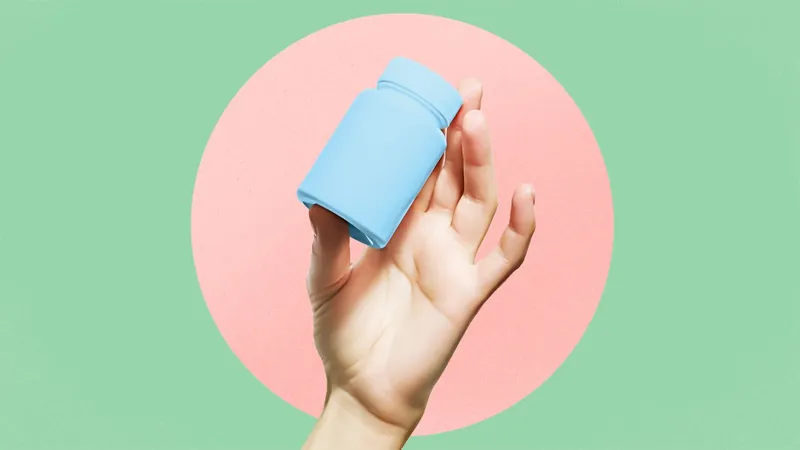
Unlocking the Secrets of Oral Minoxidil: Is It the Game-Changer for Hair Loss?
2024-11-20
Author: Sarah
In a groundbreaking new consensus statement, dermatology experts have shed light on the effective use of oral minoxidil for treating hair loss, providing critical guidance on how to best approach this treatment. This newly published information is expected to empower physicians, encouraging them to consider oral minoxidil as a viable option for patients suffering from various forms of hair thinning and loss.
Dr. Brittany Craiglow, an associate adjunct professor of dermatology at Yale University and a key figure in drafting the guidelines, emphasizes the need for clinicians to embrace this new tool for hair loss management. "With oral minoxidil still being a relatively novel treatment in dermatology, there’s hesitance among some doctors when it comes to prescribing it. This consensus statement aims to remedy that by delivering vital insights into its indications, dosing, and potential side effects," she notes.
Why Choose Oral Minoxidil Over Traditional Treatments?
Topical minoxidil treatments, such as Rogaine, have long been the go-to for hair loss, yet many patients find these products to be less than satisfactory. The consensus reveals that challenges such as cost, ineffectiveness, and discomfort can often deter individuals from using topical solutions. While the FDA only permits topical minoxidil for hair loss, physicians have the leeway to prescribe oral minoxidil—which is FDA-approved for hypertension—for off-label use.
"Oral minoxidil should be considered especially if topical minoxidil proves impractical," says Dr. Paradi Mirmirani, another coauthor of the statement. The statement highlights that low-dose oral therapies can prevent the hassle of daily topical application while mitigating common styling issues.
Dosing Guidelines: What You Need to Know
For those contemplating oral minoxidil, understanding dosing is crucial. According to the consensus recommendations: - Adult males: Start with 2.5 mg - Adult females: Start with 1.25 mg - Adolescent males: Start with 1.25 mg - Adolescent females: Start with 0.625 mg The suggested maximum daily doses are 5 mg for adult males and 2.5 mg for adolescent females, opening the door for a broad spectrum of patients to access this treatment effectively.
Be Cautious: Potential Side Effects of Oral Minoxidil
As with any medication, oral minoxidil comes with potential side effects. Patients should consult with healthcare providers before starting treatment, to discuss any interactions with existing medications and evaluate personal health risks. Side effects may include: - Sudden drops in blood pressure - Accumulation of fluid around the heart - Irregular heartbeat - Dizziness and headaches Certain groups, such as pregnant women or individuals with significant heart conditions, must avoid oral minoxidil altogether. As outlined in the statement, people with histories of low blood pressure or kidney ailments should receive specialized care to monitor their treatments closely.
Is Oral Minoxidil the Future of Hair Restoration?
While the consensus statement provides a framework for understanding oral minoxidil, ongoing research continues to validate its efficacy for various hair loss conditions, including age-related thinning and different forms of alopecia. Experts are optimistic that further popularizing this treatment will enhance patient confidence and improve overall outcomes in hair restoration.
In summary, oral minoxidil could very well become the next frontier in tackling hair loss for those dissatisfied with topical treatments. As further studies unfold and more doctors embrace this oral option, it may soon usher in a new era of hair loss management that is more effective and user-friendly. Stay tuned, as this narrative surrounding hair restoration unfolds!

 Brasil (PT)
Brasil (PT)
 Canada (EN)
Canada (EN)
 Chile (ES)
Chile (ES)
 España (ES)
España (ES)
 France (FR)
France (FR)
 Hong Kong (EN)
Hong Kong (EN)
 Italia (IT)
Italia (IT)
 日本 (JA)
日本 (JA)
 Magyarország (HU)
Magyarország (HU)
 Norge (NO)
Norge (NO)
 Polska (PL)
Polska (PL)
 Schweiz (DE)
Schweiz (DE)
 Singapore (EN)
Singapore (EN)
 Sverige (SV)
Sverige (SV)
 Suomi (FI)
Suomi (FI)
 Türkiye (TR)
Türkiye (TR)